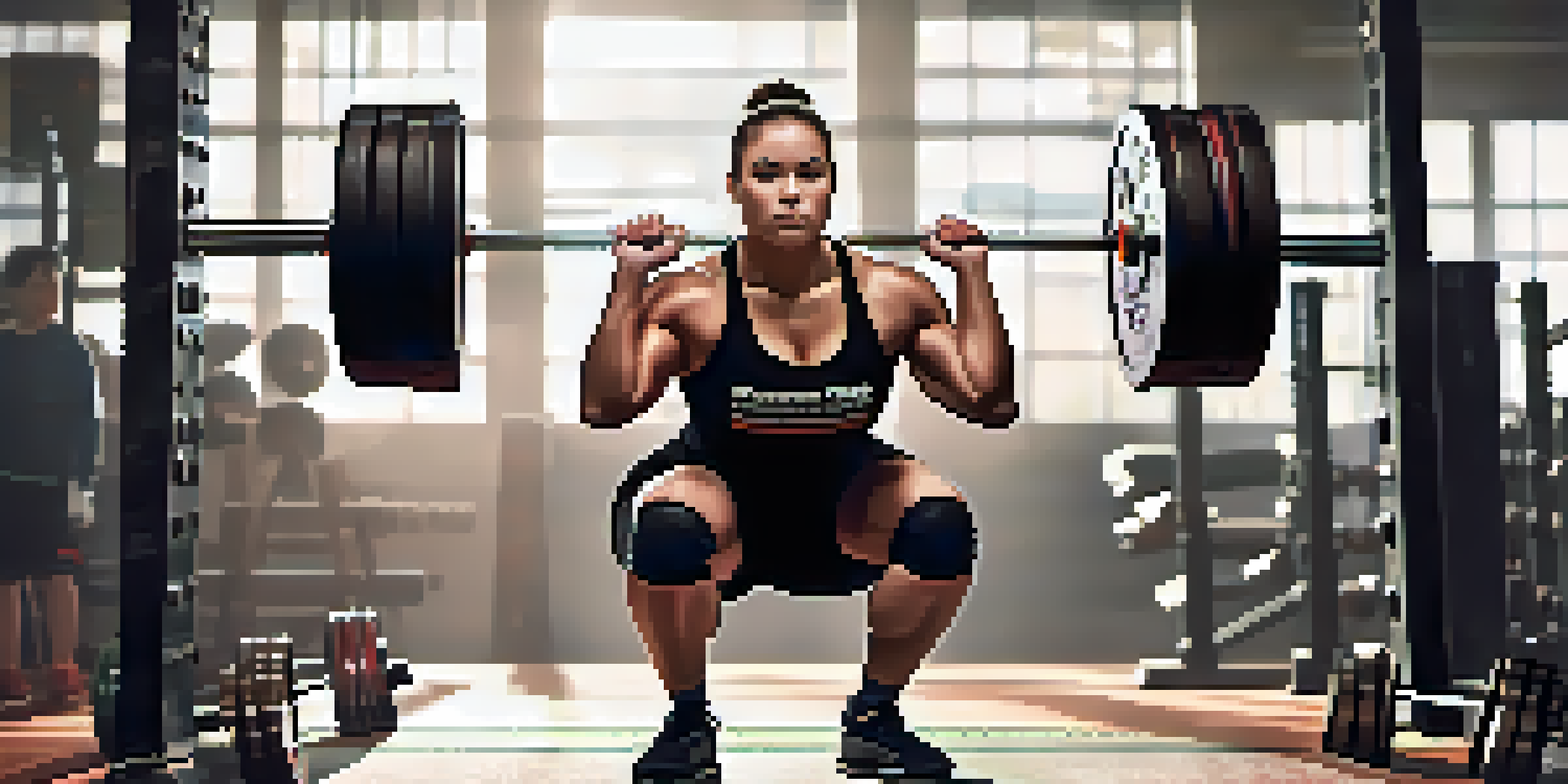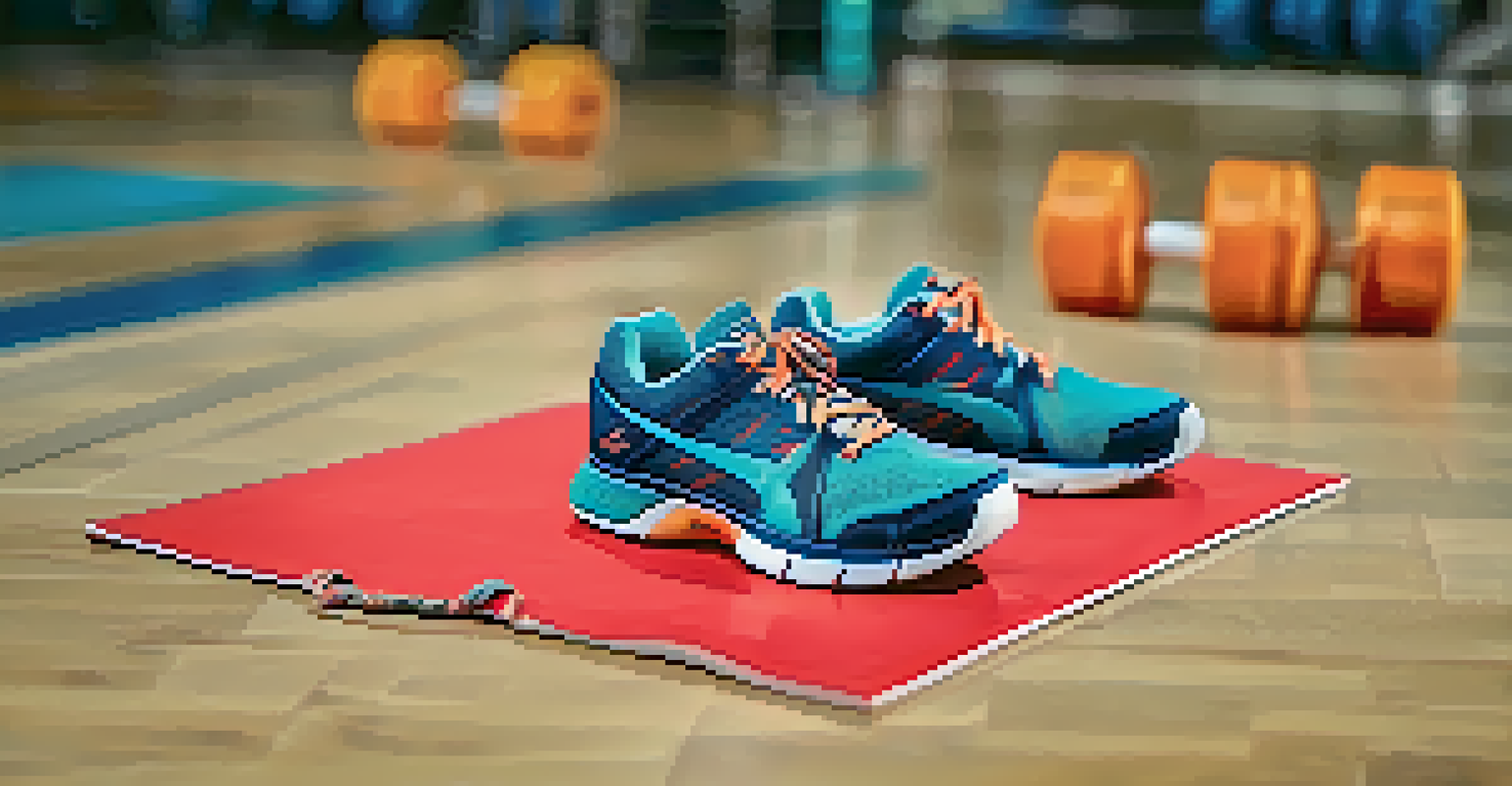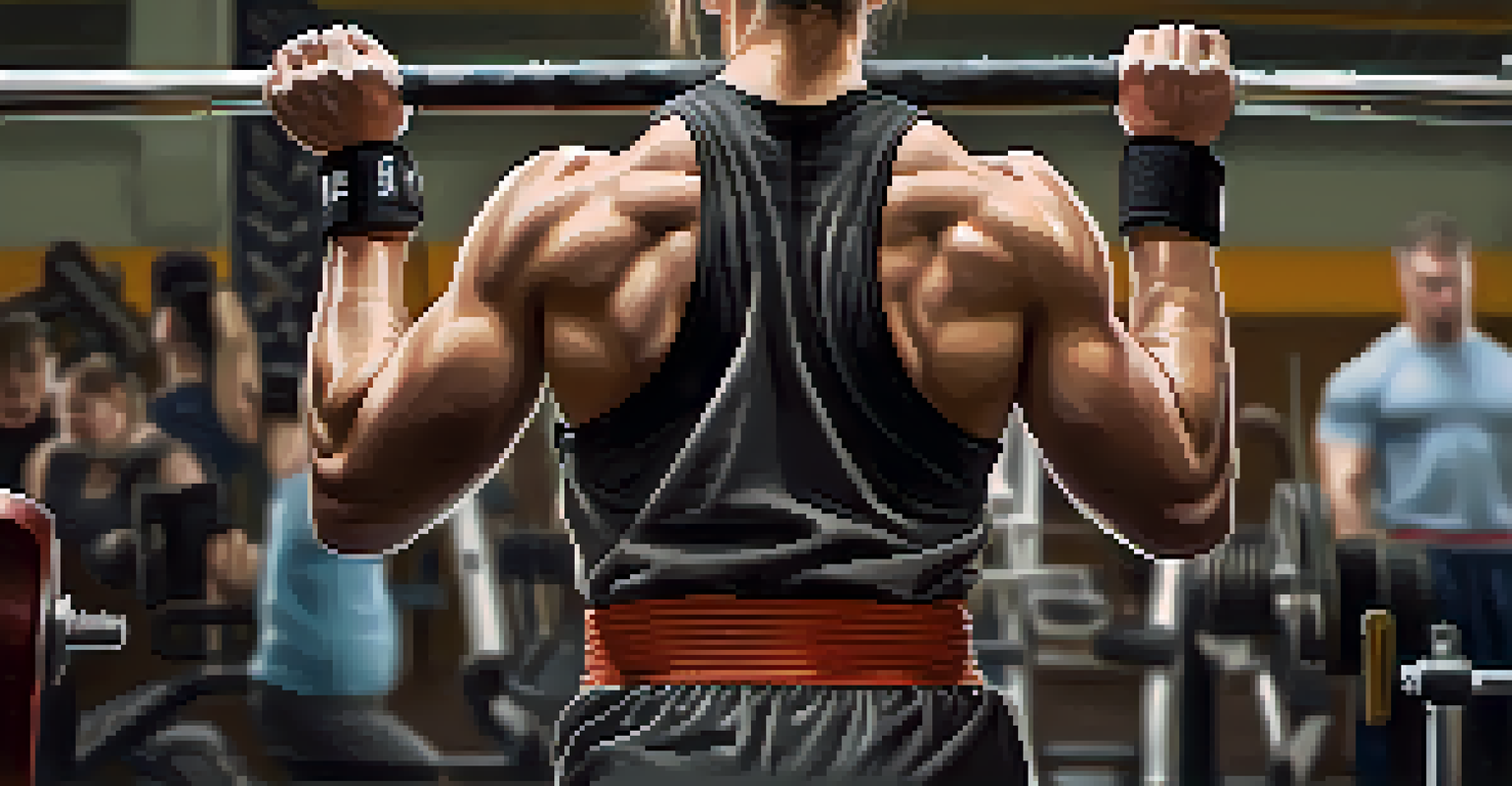Choosing Powerlifting Gear: A Guide to Optimal Performance

Understanding the Importance of Powerlifting Gear
Powerlifting gear plays a crucial role in maximizing your performance during lifts. Whether you're a beginner or an experienced lifter, the right equipment can help you achieve your personal best. Think of your gear as the foundation of your lifting journey, much like a sturdy pair of shoes supports your feet during a long run.
The more you sweat in training, the less you bleed in battle.
Using proper gear not only enhances your strength but also contributes to safety. For instance, a well-fitted lifting belt can provide essential support for your back, reducing the risk of injury. This is especially important when you're pushing your limits during heavy lifts.
Moreover, having the right gear can boost your confidence on the platform. When you feel comfortable and secure in your equipment, you're more likely to focus on your technique and performance. Just like a musician feels empowered with a well-tuned instrument, a powerlifter can unlock their potential with the right gear.
Essential Gear for Powerlifting: An Overview
The essential gear for powerlifting includes items like lifting shoes, belts, knee sleeves, and singlets. Each piece serves a specific purpose, working together to enhance your performance. For example, lifting shoes provide a solid base and optimal grip, allowing for better stability during heavy lifts.

A lifting belt is another key component, designed to support your core and maintain proper posture. This is particularly beneficial during squats and deadlifts, where the risk of injury can be higher without adequate support. Think of it as a safety harness that helps you lift more while reducing strain on your body.
Powerlifting Gear Enhances Performance
The right powerlifting equipment, such as lifting shoes and belts, can significantly improve your strength and safety during lifts.
Knee sleeves offer warmth and compression, aiding in joint stability. While some lifters may opt for wraps, sleeves are often preferred for their ease and comfort during training. With the right gear, you'll be better equipped to tackle those heavy weights.
Choosing the Right Lifting Shoes for Your Needs
When selecting lifting shoes, it's essential to consider factors such as heel height, fit, and material. Different styles cater to various lifting techniques, so knowing your preferences can make a significant difference. For instance, Olympic lifters often prefer shoes with a raised heel to facilitate deeper squats, while powerlifters might choose flatter shoes for stability.
Success is where preparation and opportunity meet.
Fit is crucial; your shoes should be snug but not overly tight. A proper fit ensures that your feet are secure, allowing you to focus on your lifts instead of discomfort. If you've ever experienced blisters or pinched toes while working out, you'll understand the importance of choosing the right size.
Lastly, consider the sole's material and grip. A rubber sole can provide excellent traction on the platform, helping to prevent slips during your lifts. Just like a race car needs the right tires for optimal performance, your lifting shoes can significantly impact your success in the gym.
Finding the Perfect Lifting Belt for Support
Choosing a lifting belt involves understanding its width, thickness, and material. A general rule of thumb is to opt for a belt that is at least 4 inches wide for adequate support. The thickness varies, with 10mm and 13mm options available, so consider your lifting style and preferences when making a selection.
Material also plays a role in comfort and durability. Leather belts are often favored for their sturdiness, while nylon belts may offer a more flexible option. Think about whether you want a belt that will last for years or one that can adapt to your changing needs.
Choosing Gear for Individual Needs
Selecting gear like lifting shoes, belts, and knee sleeves should consider personal comfort, fit, and specific lifting styles.
It's important to try on different belts to find one that fits comfortably around your waist. Remember, a good belt should provide support without restricting your movement. Just like the right hug can make you feel secure, the right belt can help you lift with confidence.
The Role of Knee Sleeves in Powerlifting Performance
Knee sleeves provide both warmth and compression, which can enhance your performance and reduce the risk of injury. They help keep your joints stable during lifts, making them a popular choice among powerlifters. If you've ever felt that comforting pressure around your knees during a workout, you know how beneficial it can be.
Choosing the right thickness and size is key; common options range from 5mm to 7mm. Thicker sleeves offer more support but can be less flexible, so consider your lifting style and personal comfort. Just like you wouldn't wear a heavy coat on a warm day, you want knee sleeves that match your specific needs.
Additionally, knee sleeves can aid in recovery by promoting blood flow to the area. This can help reduce soreness after intense training sessions. Think of them as an extra layer of support that not only protects but also nurtures your joints.
Selecting a Singlet: Comfort and Compliance
A singlet is a mandatory piece of attire for competitive powerlifting, but comfort should be your top priority when selecting one. Look for materials that are breathable and allow for ease of movement. If you've ever worn tight clothing that restricted your mobility, you know how important this factor is during lifts.
Fit is also essential; a singlet should be snug yet not too tight. This ensures that it stays in place while you perform your lifts, allowing you to focus solely on your technique. Just like a well-fitted suit can boost your confidence, a comfortable singlet can enhance your performance.
Budget Wisely for Quality Gear
Investing in quality powerlifting gear can enhance your performance, so prioritize essentials while being mindful of your budget.
Finally, consider the design and color options. While style might not seem crucial, feeling good in what you wear can positively impact your mindset. Choose a singlet that reflects your personality, making you feel empowered as you step onto the platform.
Budgeting for Powerlifting Gear: What to Consider
When budgeting for powerlifting gear, it's essential to balance quality and cost. Investing in high-quality equipment can significantly enhance your performance and longevity, making it a worthwhile expenditure. Think of it as buying a reliable car; spending more upfront can save you money on repairs down the line.
Consider starting with the essentials and gradually adding to your collection. Prioritize items that will have the most immediate impact on your training, such as lifting shoes and a belt. Once you’ve built a solid foundation, you can explore additional gear like knee sleeves and singlets.

Remember, the most expensive gear isn't always the best for you. Take the time to research and read reviews to find equipment that fits your needs and budget. Just as you wouldn't blindly choose a restaurant without checking the menu, make informed decisions about your powerlifting gear.